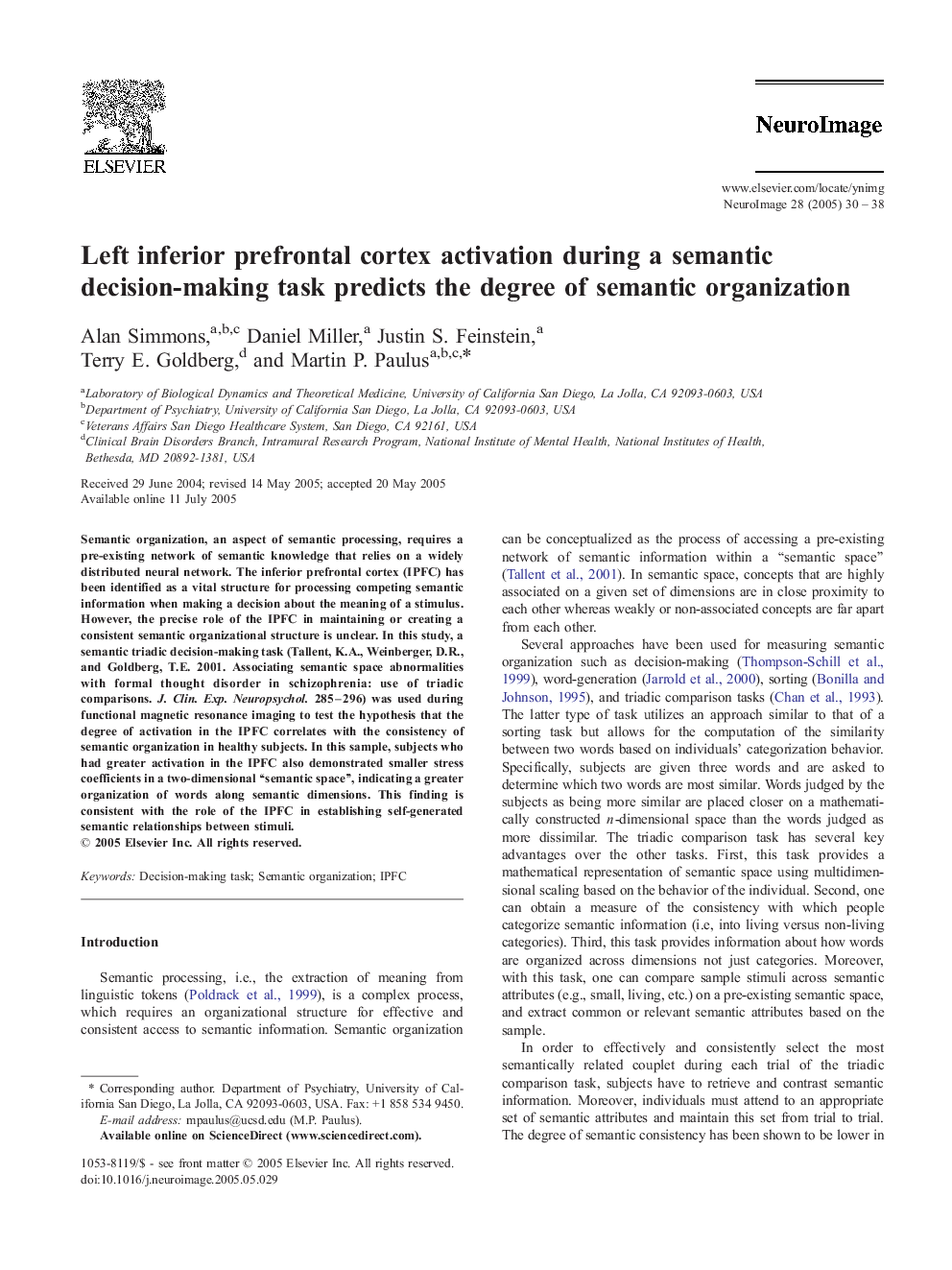| Article ID | Journal | Published Year | Pages | File Type |
|---|---|---|---|---|
| 9197757 | NeuroImage | 2005 | 9 Pages |
Abstract
Semantic organization, an aspect of semantic processing, requires a pre-existing network of semantic knowledge that relies on a widely distributed neural network. The inferior prefrontal cortex (IPFC) has been identified as a vital structure for processing competing semantic information when making a decision about the meaning of a stimulus. However, the precise role of the IPFC in maintaining or creating a consistent semantic organizational structure is unclear. In this study, a semantic triadic decision-making task (Tallent, K.A., Weinberger, D.R., and Goldberg, T.E. 2001. Associating semantic space abnormalities with formal thought disorder in schizophrenia: use of triadic comparisons. J. Clin. Exp. Neuropsychol. 285-296) was used during functional magnetic resonance imaging to test the hypothesis that the degree of activation in the IPFC correlates with the consistency of semantic organization in healthy subjects. In this sample, subjects who had greater activation in the IPFC also demonstrated smaller stress coefficients in a two-dimensional “semantic space”, indicating a greater organization of words along semantic dimensions. This finding is consistent with the role of the IPFC in establishing self-generated semantic relationships between stimuli.
Keywords
Related Topics
Life Sciences
Neuroscience
Cognitive Neuroscience
Authors
Alan Simmons, Daniel Miller, Justin S. Feinstein, Terry E. Goldberg, Martin P. Paulus,
